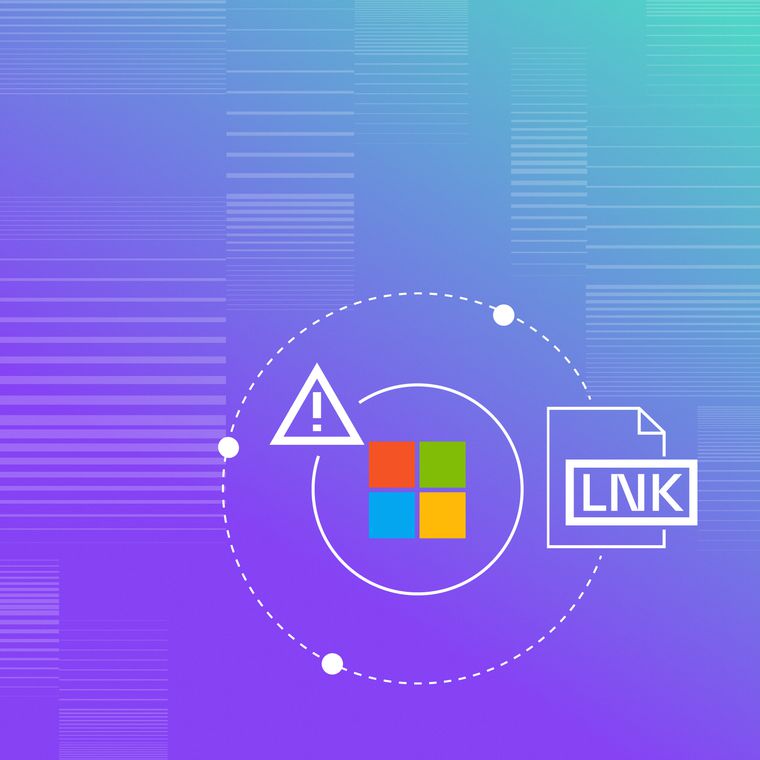Top Weak Spots That Make Data Exfiltration Easier Than You Think
Find and fix the blind spots attackers exploit to sneak data out of your network.
July 29, 2025
Data exfiltration doesn't need sophisticated zero-day exploits—it thrives on the everyday oversights that security teams dismiss as "good enough." It's the unauthorized transfer of data from your environment, and the consequences hit hard: regulatory fines, contract penalties, and shattered public trust arrive long before breach investigations conclude.
Even organizations with bulletproof incident response plans can hemorrhage sensitive information when an employee clicks a malicious link from a trusted sender, or when a forgotten vendor account maintains hidden privileges. Each oversight creates a highway for attackers and malicious insiders to shuttle data beyond corporate controls.
The eight vulnerabilities below reveal the most common weak spots, over-permissive access, invisible SaaS integrations, ghost accounts, and more. More importantly, they show how targeted visibility and behavior-based defenses can seal these gaps before the next exfiltration attempt succeeds.
1. Over-Permissive Access to Collaboration Tools
Loose access controls in collaboration platforms make it easy for attackers to exfiltrate data. Files shared with "anyone with the link," broad group permissions, and over-privileged bots often go unnoticed but pose serious risks. Attackers exploit these gaps because they resemble normal activity and rarely trigger alerts.
To reduce exposure, enforce strict privilege management. Review permissions quarterly, remove unnecessary access, and avoid default “view all” or “edit all” settings. Limit third-party app scopes and monitor for unusual access, such as large file exports or external downloads from internal folders.
By tightening and regularly auditing permissions, you turn collaboration tools into secure environments that detect and block unauthorized data access.
2. Inadequate Monitoring of Email Behavior
Email remains the easiest way to move sensitive data off-network, and attackers know it. They use stealthy forwarding to personal inboxes, background auto-forward rules, and late-night bursts of oversized attachments.
Traditional secure email gateways miss these attacks because they inspect content but ignore context, without historical baselines, a massive export to an unfamiliar domain looks identical to yesterday's routine project brief.
Shift to Behavior-Based Monitoring
Build role-specific baselines for send volume, timing, recipient domains, and attachment profiles. Flag deviations continuously, especially new auto-forward rules that could indicate compromise. Add content-aware inspection that quarantines messages containing regulated data, then layer behavioral analytics on top to detect intent, not just keywords.
This approach disrupts both malicious insiders and compromised accounts before data leaves your environment. Contextual baselines paired with content inspection transform email from a blind spot into an auditable, controllable channel that reveals exfiltration attempts in real-time.
3. Poor Visibility into SaaS-to-SaaS Integrations
SaaS integrations using OAuth tokens and APIs can create hidden data exfiltration paths. These tokens often bypass password changes and remain active indefinitely, while over-permissioned apps and unsecured APIs expose sensitive data. Attackers can exploit these weak points to extract information without detection.
To reduce risk, treat integrations like privileged accounts. Regularly review and remove unused OAuth tokens, limit permission scopes, and require approval for new integrations. Monitor inter-app data flows for unusual activity, such as spikes or unfamiliar destinations, and act quickly on anomalies.
4. Orphaned and Unused Accounts
Dormant accounts that are left behind by former employees, contractors, or long-term service users, pose a hidden exfiltration risk. These unused credentials often retain access to sensitive data and rarely trigger alerts, making them a prime target for attackers. Once compromised, they enable stealthy data theft, especially in SaaS environments where access often spans multiple applications.
To prevent this, implement automated identity lifecycle management to instantly deprovision users upon departure. Supplement automation with quarterly access reviews to remove inactive accounts and excessive privileges. Monitor for logins from unused accounts and enforce time-limited access for contractors to reduce long-term risk.
5. Lack of Contextual User Risk Scoring
Traditional security policies treat all user activity the same, missing early signs of data exfiltration. For example, when a finance analyst downloads large volumes of source code at 2 a.m., flat policies may not flag it. In contrast, contextual risk scoring would immediately recognize the abnormal behavior and trigger a response.
Contextual risk scoring evaluates user actions based on business context, such as role, data sensitivity, location, and time. This creates a dynamic risk model that highlights high-risk activity. Modern platforms use factors like device security, access patterns, and asset importance to assign real-time risk scores and adjust enforcement accordingly.
Risk scoring combines signals across time of access, geolocation, and data type to tighten detection and reduce false positives. By adopting context-aware scoring, your team can focus on the most serious threats, catching advanced exfiltration attempts before data leaves your environment.
6. Misconfigured DLP Rules or Alert Fatigue
Poorly-tuned DLP policies create more problems than they solve, drowning security teams in false positives while real exfiltration attempts slip through undetected. Traditional systems depend on rigid pattern matching, so every payroll spreadsheet or encrypted archive generates alerts, yet subtle insider leaks glide past completely unnoticed.
Map policies to actual data flows and user roles so you only alert when sensitive content moves in genuinely unusual ways. This immediately cuts noise by focusing on actual risk rather than pattern matches. Prioritize alerts by combining severity, user behavior, and data sensitivity to surface the five alerts that matter, not 500 that don't.
AI-driven classification engines reduce false positives by learning normal handling patterns for regulated data. Build feedback loops where every closed incident updates detection logic, creating self-improving systems that get smarter with each investigation.
7. External File Transfers in Plain Sight
Legitimate communication channels become exfiltration vectors when attackers repurpose routine email, chat, and browser uploads to move data outside your organization. They exploit approved channels precisely because they generate minimal security alerts and appear completely normal in access logs.
The Behavioral Baseline Solution
Analyze historical logs to establish who sends files, where they send them, and at what volumes. Modern integrations automate this profiling using anomaly detection engines that surface genuine outliers:
Establish per-user transfer thresholds and block or quarantine anything that exceeds established patterns
Deploy context-aware monitoring that factors in role, file sensitivity, and destination before triggering alerts
Continuously retrain models so baselines adapt to seasonal peaks or new business workflows
Correlate transfer anomalies with identity signals like privilege escalation or unusual login locations
Rigorous baselines combined with adaptive analytics convert routine communication channels into early-warning systems that detect exfiltration attempts immediately.
8. No Granular Insight into Vendor and Partner Behavior
Vendors operate with privileged access you rarely audit comprehensively, creating unmonitored pathways for data to exit your environment. When partner accounts face compromise or misuse, attackers move laterally under legitimate activity cover, the defining characteristic of modern supply-chain breaches.
Close the Vendor Gap
Apply the same scrutiny to vendors that you enforce for employees. Schedule quarterly vendor access reviews to verify every permission aligns with current business needs. Each unnecessary access point represents a potential exfiltration vector.
Establish behavioral baselines for each partner that capture normal data interaction patterns, volume, timing, and destination of data pulls. These baselines enable real-time investigation when anomalies surface. Integrate monitoring tools that alert on changes in vendor IP addresses, device fingerprints, or API scopes.
Prioritize oversight using vendor security scoring to focus resources on partners whose security posture or access level creates the greatest risk.
Why Behavior-Based Defense Closes These Gaps
Behavior-based defense addresses critical data exfiltration gaps by learning your organization’s normal operations and detecting deviations in real time. Instead of relying on static rules or signatures, this adaptive approach uses behavioral analytics to identify true threats with high accuracy.
Abnormal’s models continuously monitor file-sharing behavior, email activity, and SaaS integrations for every user and vendor. This enables security teams to pinpoint unusual data movement, such as a source code file transferred off-hours to an unrecognized domain by an employee with no history of accessing that data, while reducing false positives common with traditional DLP solutions.
By correlating behavior across email, collaboration tools, and third-party applications, Abnormal uncovers multi-channel exfiltration attempts that legacy systems often miss. The platform’s real-time risk scoring automatically blocks or quarantines suspicious actions, ensuring abnormal activity is stopped before data exits your environment.
Abnormal empowers organizations to stay ahead of evolving threats. Request a demo to see how behavior-based defense eliminates blind spots and enhances your data protection strategy.
Related Posts
Get the Latest Email Security Insights
Subscribe to our newsletter to receive updates on the latest attacks and new trends in the email threat landscape.


